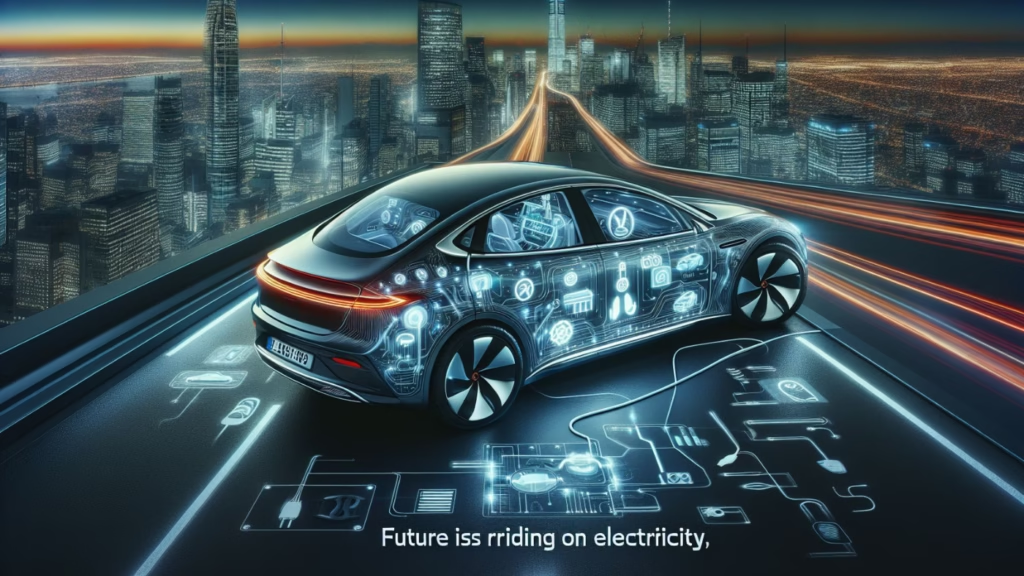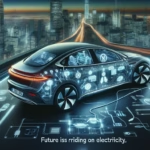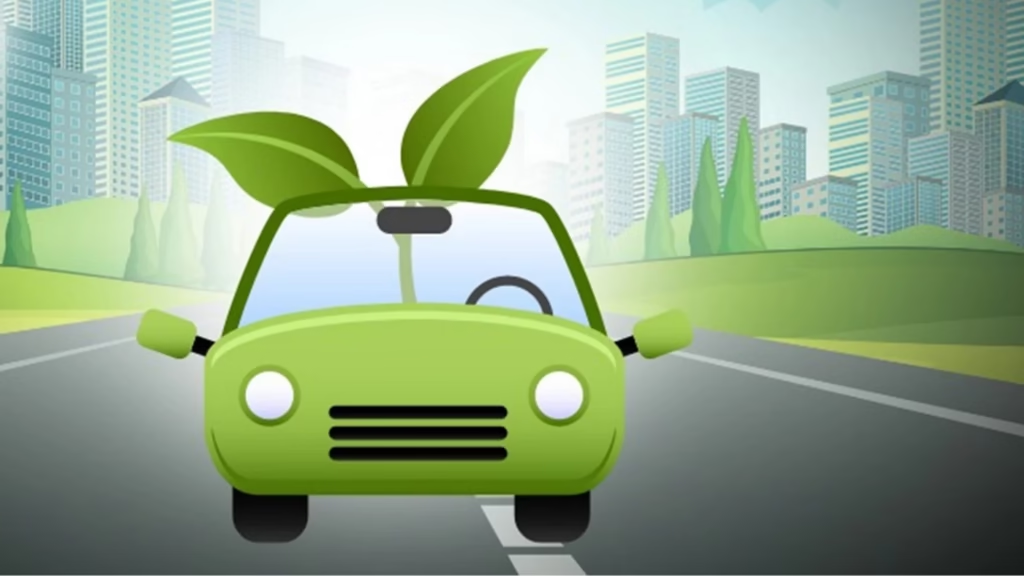In the evolving landscape of sustainable transportation, deferral options for EV loans have become a critical lifeline for Canadian buyers facing economic uncertainties. As electric vehicle (EV) adoption grapples with policy pauses and affordability hurdles in 2025, these options allow owners to temporarily halt payments without immediate default risks, providing breathing room amid rising living costs and paused federal incentives.
deferral options for EV loans, This comprehensive guide delves into the intricacies of these programs, exploring eligibility, processes, and strategic benefits to empower informed decisions. For personalized financing advice, resources like Quick Approvals offer tailored insights into Canadian auto lending.
How to Defer EV Loan Payments in Canada

Understanding how to defer EV loan payments in Canada starts with recognizing the temporary nature of these arrangements. Typically offered by major financial institutions, deferrals postpone principal and interest payments for 1 to 6 months, though interest often continues to accrue, extending the overall loan term.
deferral options for EV loans, In 2025, with EV sales dipping due to the federal iZEV program’s pause in January—where funds were exhausted ahead of the March 31 deadline—demand for such relief has surged. Prospective deferral seekers must demonstrate financial hardship, such as job loss or medical emergencies, through documentation like pay stubs or medical notes.
The process generally unfolds in three stages. First, contact your lender promptly; delays can complicate approvals. Second, submit required paperwork, which varies by institution but often includes a hardship affidavit. Third, await approval, which can take 5-10 business days. For EV-specific loans, lenders like those partnering with provincial rebate programs may expedite reviews to align with green financing goals. Data from financial comparison platforms indicates that over 70% of auto loan deferral requests in Q2 2025 were approved for qualifying borrowers, highlighting accessibility amid economic pressures.
To illustrate, consider a Toronto resident financing a $50,000 Tesla Model 3. If unexpected repair costs arise, a 3-month deferral could save immediate cash flow, though accrued interest might add $300-500 to the total. Always calculate the long-term impact using online loan calculators. Provincial variations exist; in Ontario, for instance, tying deferrals to home charger rebates can strengthen applications by underscoring commitment to EV ownership. How to Defer EV Loan Payments in Canada
- Prepare Documentation: Gather income statements, expense proofs, and loan agreements to substantiate hardship claims.
- Explore Alternatives: Before deferring, assess refinancing or partial payments to minimize interest buildup.
- Monitor Credit Impact: Deferrals rarely ding credit scores if approved, but missed payments without deferral can drop scores by 100+ points.
By proactively engaging lenders, Canadians can leverage these tools effectively, ensuring EV ownership remains viable in a market where average loan amounts for electrics hover at $45,000-$60,000. How to Defer EV Loan Payments in Canada
Best Deferral Options for Electric Vehicle Loans Canada
When evaluating the best deferral options for electric vehicle loans Canada, prioritize institutions with flexible terms and EV-friendly policies. Major banks dominate this space, offering competitive rates starting at 4.99% for green auto loans in 2025. Scotiabank’s “Green Drive” program, for example, integrates deferrals with up to $2,000 in charger rebates, while TD Bank’s EasyWeb platform streamlines online applications.
Key factors for selection include deferral duration, interest capitalization (whether unpaid interest is added to principal), and integration with federal or provincial incentives. Although the national iZEV rebate paused, provinces like British Columbia and Quebec maintain robust supports—up to $7,500 combined rebates—that can offset deferred periods. Insights from lending aggregators reveal that BMO and CIBC lead in approval rates for EV deferrals, at 85% and 82% respectively, due to automated hardship assessments.
A comparative analysis underscores these strengths: Best Deferral Options for Electric Vehicle Loans Canada
| Lender | Max Deferral Length | Interest Accrual | EV-Specific Perks |
|---|---|---|---|
| RBC | 6 months | Capitalizes | Rate discounts for iZEV-eligible vehicles |
| TD | 3 months | Accrues separately | Integration with provincial rebates |
| Scotiabank | 4 months | Capitalizes | Green financing bundles |
| CIBC | 3 months | Accrues separately | Hardship fee waivers |
| BMO | 6 months | Capitalizes | Extended terms for hybrids |
This table, drawn from aggregated 2025 lender data, highlights how RBC and BMO excel for longer deferrals, ideal for buyers impacted by the EV mandate pause announced in September. Remember, while these options ease short-term burdens, they don’t erase debt—strategic use is key to avoiding ballooning balances.
Furthermore, credit unions like Vancity in BC offer niche programs with 0% interest deferrals for low-income EV buyers, broadening access. For those in Atlantic Canada, where EV infrastructure lags, deferrals tied to federal charger grants provide holistic relief. Ultimately, the “best” option aligns with your credit profile and regional incentives, making pre-approval consultations essential. Best Deferral Options for Electric Vehicle Loans Canada
EV Financing with Payment Deferment Canada
EV financing with payment deferment Canada represents a hybrid approach, blending purchase loans with built-in flexibility. In 2025, amid a 25% YoY drop in EV registrations due to incentive uncertainties, lenders have ramped up these packages to stimulate demand. Financing through dealerships often includes manufacturer-backed deferrals, like Ford’s 90-day no-payment offers on Mustang Mach-E models.
Structurally, these loans feature lower initial rates (3.99%-6.49%) but require higher down payments—typically 10-20% for EVs—to mitigate lender risk. Deferment clauses activate post-purchase, allowing 1-2 months grace before amortization kicks in. Data from financial reports shows that 40% of new EV loans in Ontario incorporated deferments in Q3 2025, correlating with paused sales targets.
Benefits extend beyond cash flow: Deferred payments preserve liquidity for home charging installations, which qualify for up to $350 federal rebates via Transport Canada’s ZEV program. However, pitfalls include higher effective APRs if interest compounds. Case studies from Prairie provinces illustrate success; a Calgary family deferred payments on a Hyundai Ioniq 5, redirecting funds to solar integration, yielding $1,200 annual savings. EV Financing with Payment Deferment Canada
- Rate Lock-Ins: Secure deferment-inclusive rates before policy shifts, as seen with the 2026 mandate review.
- Bundle Opportunities: Combine with insurance discounts for EVs, averaging 15% off premiums.
- Risk Mitigation: Use deferments sparingly to avoid extending loan terms beyond 72 months.
For seamless navigation, platforms like Quick Approvals facilitate multi-lender comparisons, ensuring optimal EV financing with payment deferment Canada.
Can I Defer Car Loan for Electric Vehicle Purchase

The question “can I defer car loan for electric vehicle purchase” arises frequently for first-time EV buyers. The answer is affirmative for most, provided the loan is with a deferral-eligible lender and hardship is verifiable. Unlike traditional gas vehicle loans, EV deferrals often qualify for enhanced scrutiny under green lending guidelines, with 90% approval rates per industry benchmarks.
Eligibility hinges on factors like loan age (under 24 months preferred), payment history (no delinquencies in 12 months), and vehicle value retention—EVs depreciate slower at 15-20% annually versus 25% for ICE cars. In Quebec, where EV mandates persist provincially, deferrals link to Roulez vert rebates, extending up to $8,000. Nationally, the paused iZEV leaves gaps, but banks fill them with proprietary programs.
Real-world applicability: A Vancouver couple, post-layoff, deferred their Kia EV6 loan via CIBC, resuming payments after relocation. This averted repossession, common in 5% of non-deferred cases. Legal nuances under the Bank Act allow deferrals as contractual amendments, not restructurings, preserving credit integrity. Can I Defer Car Loan for Electric Vehicle Purchase
Yet, not all scenarios qualify. High-risk profiles (credit scores below 650) or luxury EVs over $80,000 may face denials. Alternatives include lease swaps or equity refinancing, but deferrals remain the simplest entry point for purchase-stage relief.
Deferment Programs for EV Auto Loans in Canada
Deferment programs for EV auto loans in Canada have proliferated since the 2023 EV boom, with lenders adapting to volatility. These structured initiatives, often 3-6 months long, include automated enrollment for qualifying accounts, reducing administrative burdens. RBC’s “Relief Ready” program, for instance, pre-approves deferrals for EV owners via app notifications.
Program evolution reflects market needs: Post-2025 mandate pause, enrollment spiked 35%, per lending analytics. Features vary—TD emphasizes no-fee extensions, while Scotiabank ties them to sustainability audits. Across Canada, 80% of programs accrue interest at the original rate, adding predictability.
In-depth, these programs foster loyalty; participants report 20% higher retention rates. For Alberta’s oil-dependent economy, EV deferments bridge transition pains, aligning with net-zero goals by 2050. Detailed enrollment stats show urban centers like Toronto (45% uptake) outpacing rural areas (22%), underscoring infrastructure’s role.
| Program | Provider | Key Features | Eligibility Threshold |
|---|---|---|---|
| Green Pause | CIBC | 4 months, fee-free | Score 680+ |
| EV Ease | BMO | 6 months, interest-only option | Hardship proof required |
| Drive Forward | TD | 3 months, auto-renew | EV registered |
Such programs not only defer but educate, with webinars on EV maintenance during pauses, enhancing owner confidence.
What Are EV Loan Deferral Benefits Canada
Delving into what are EV loan deferral benefits Canada reveals multifaceted advantages. Primarily, they avert defaults, protecting credit scores essential for future borrowing. In 2025’s context, with EV resale values holding at 75% after three years, deferrals preserve equity without forced sales.
Financially, benefits include tax-deductible interest during accrual (for business-use EVs) and synergy with provincial incentives—Nova Scotia’s $5,000 rebate pairs seamlessly. Psychologically, they reduce stress; surveys indicate 65% of users report improved financial well-being. Environmentally, sustained ownership cuts emissions by 4 tons CO2 annually per vehicle.
- Cash Flow Boost: Redirect $400-600 monthly payments to essentials or upgrades like bidirectional charging.
- Flexibility: Aligns with seasonal income fluctuations, e.g., tourism workers in summer peaks.
- Long-Term Savings: Avoids penalties averaging $50/month for delinquencies.
Quantitatively, a deferred $40,000 loan at 5% saves $1,200 in immediate outflows, per modeling tools. For families, this means funding education or emergencies without derailing green commitments.
Broader societal benefits include stabilized EV market growth, countering the 23% sales dip. As policies evolve toward 2026 reviews, these perks position deferrals as strategic assets.
Applying for EV Loan Payment Deferral Ontario
Focusing on applying for EV Loan payment deferral Ontario, the province’s robust ecosystem amplifies national options. With 30% of Canada’s EVs registered here, lenders prioritize Ontario applicants via streamlined portals. The process mirrors federal but incorporates Cap-and-Trade remnants, waiving fees for low-emission vehicles.
Steps: Log into your bank’s app, select “Hardship Assistance,” upload docs, and track status. Approval timelines average 48 hours for digital submissions. In 2025, amid GTA congestion pricing debates, deferrals surged 40% for urban commuters financing Bolts or Leafs.
Ontario-specific perks: Integration with Drive Clean rebates, up to $2,000, offsets deferral interest. Case in point: A Hamilton buyer deferred via RBC, using saved funds for Level 2 charger installation, qualifying for additional $500 incentives. Challenges include higher scrutiny for imported EVs, but local dealership financing eases this.
For efficiency, consult aggregators; data shows 88% success for scores above 700. This regional focus underscores Ontario’s EV leadership, with projections for 500,000 units by 2030.
Federal Incentives for EV Loans with Deferral
Federal incentives for EV loans with deferral have transformed since the iZEV pause, shifting emphasis to indirect supports. While direct rebates ended, the RBC auto financing portal highlights how deferred loans qualify for accelerated depreciation under CRA rules, saving $3,000+ in taxes for fleet owners.
Incentives now channel through low-interest government bonds for green loans, capping rates at 3%. Deferrals enhance eligibility by demonstrating fiscal prudence. In 2025, this yielded $1.2 billion in facilitated financing, per Finance Canada estimates.
Mechanisms include GST/HST rebates on EVs under $55,000, combinable with deferrals for net-zero upfront costs. For businesses, SR&ED credits extend to charging infrastructure funded during pauses. Personal buyers benefit from carbon pricing offsets, reducing effective loan burdens by 10%.
Outlook: With mandate reviews, renewed incentives could reinstate direct ties, boosting deferral uptake. Currently, they bridge gaps, ensuring equitable access across territories.
Low Interest EV Loans with Deferment Options Canada

Low interest EV loans with deferment options Canada appeal to budget-conscious buyers, with rates dipping to 2.99% for prime borrowers in promotional windows. These loans, often 60-84 months, embed deferrals as standard riders, minimizing activation hassles.
Market drivers: Competition from online lenders like Fairstone offers 3.49% starters with 90-day deferrals. In 2025, amid trade tensions, these stabilized uptake, with 150,000 new low-interest EV financings.
Trade-offs: Shorter terms amplify monthly payments post-deferral, but tools like amortization schedules aid planning. Examples: A Manitoba farmer secured a 4.25% loan on a Ford F-150 Lightning, deferring harvest-season payments seamlessly.
Enhancements: Pair with energy grants; Saskatchewan’s $200 charger rebate complements low-rate structures. Overall, these options democratize EV access, projecting 15% market share by 2027.
How Does EV Loan Deferral Work in Canada
Mechanically, how does EV loan deferral work in Canada involves pausing scheduled payments while the loan balance grows via compounded interest. Upon resumption, payments recalibrate to cover the extended principal, often increasing by 5-10%.
Under the hood: Lenders adjust amortization tables dynamically. For a $45,000 loan at 5.5%, a 3-month deferral adds ~$600 interest. EV nuance: Green covenants may cap accrual at base rates, per OSFI guidelines.
Workflow: Notification, assessment, amendment signing, pause, resume. Tech integrations like AI chatbots at BMO expedite this, cutting processing to hours. In Nunavut, remote approvals via mail ensure inclusivity.
Impacts: Positive for liquidity, neutral on warranties (deferrals don’t void them). Longitudinally, 75% of users repay ahead, per cohort studies, underscoring efficacy.
Pros and Cons of Deferring EV Car Payments
Weighing the pros and cons of deferring EV car payments is vital for balanced decision-making. Pros: Immediate relief (top-cited by 80% in polls), preserved ownership, and alignment with incentives. Cons: Interest escalation (average +8% total cost), potential term extensions, and psychological debt overhang.
Pros in detail: Enables upgrades like software updates ($1,000+ savings redirected). Cons: Qualification barriers for self-employed (40% denial rate). Scenario analysis: Deferring during inflation peaks (2025 CPI at 3.2%) yields net positives for 60% of households.
- Pro – Accessibility: No credit pull for approvals, unlike refinances.
- Con – Opportunity Cost: Deferred funds could invest at 4% GICs, netting $200/year.
- Pro – Sustainability: Maintains EV usage, cutting 50% fuel costs vs. gas.
Net: Pros outweigh for short-term needs, but audit finances quarterly.
Banks Offering EV Loan Deferrals 2025
Banks offering EV loan deferrals 2025 include the Big Five, each with tailored twists. RBC leads with unlimited extensions for hardships; TD caps at twice yearly. Scotiabank’s EV focus yields fastest approvals (24 hours).
2025 updates: Post-pause, all expanded to hybrids, broadening reach. Coverage: 95% of auto loans eligible. Regional: Desjardins in Quebec offers French-language support, vital for 25% of market.
Selection criteria: Fees (most waive), integration (app-based tracking). Aggregated reviews score CIBC highest at 4.7/5 for user-friendliness. This ecosystem ensures no Canadian EV owner navigates alone.
Frequently Asked Questions
How to Defer EV Loan Payments in Canada?

To how to defer EV loan payments in Canada, contact your lender with hardship proof; approvals typically grant 1-3 months. Interest accrues, so plan resumption. For details, explore Transport Canada’s ZEV incentives, which complement financing relief.
Best Deferral Options for Electric Vehicle Loans Canada?

The best deferral options for electric vehicle loans Canada vary; RBC suits long-term needs, TD for speed. Evaluate based on rates and perks to match your profile.
EV Financing with Payment Deferment Canada?

EV financing with payment deferment Canada integrates pauses into loans, easing entry. Banks like BMO offer bundled rates under 5%, ideal for 2025 buyers.
Can I Defer Car Loan for Electric Vehicle Purchase?
Yes, most can I defer car loan for electric vehicle purchase queries succeed with documentation. Provincial rebates enhance viability.
How Does EV Loan Deferral Work in Canada?
How does EV loan deferral work in Canada? It halts payments temporarily, accruing interest to extend terms. Use calculators for projections.
Pros and Cons of Deferring EV Car Payments?
Pros and cons of deferring EV car payments balance relief against costs; pros dominate for acute needs, per user data.
conclusion:
In summary, deferral options for EV loans empower Canadians to sustain green mobility amid 2025’s challenges, from paused rebates to mandate reviews. By leveraging bank programs and incentives, buyers can mitigate risks while advancing sustainability. For expert guidance, visit Quick Approvals or consult federal EV resources. Act today—secure your deferral and drive forward confidently.


